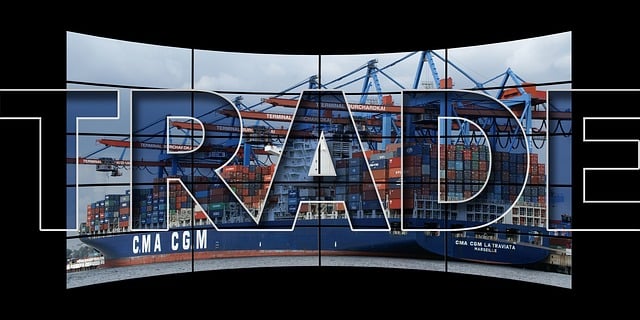Comprehensive Guide to Foreign Exchange Futures Contracts
Author: Jameson Richman Expert
Published On: 2025-07-31
Prepared by Jameson Richman and our team of experts with over a decade of experience in cryptocurrency and digital asset analysis. Learn more about us.
Foreign exchange futures contracts are pivotal instruments within the global financial landscape, providing traders, corporations, and institutional investors with powerful tools to hedge currency exposure, speculate on currency fluctuations, and diversify their investment portfolios. These standardized agreements, traded on regulated exchanges, enable market participants to lock in exchange rates for future transactions, thereby mitigating risks associated with currency volatility. Their significance extends beyond individual traders to include multinational corporations managing cross-border operations, hedge funds executing sophisticated arbitrage strategies, central banks implementing monetary policies, and institutional investors seeking diversification and risk-adjusted returns.
Over years of market analysis and practical application, a nuanced understanding of the mechanics, strategic applications, and inherent risks of foreign exchange futures can significantly enhance trading effectiveness. This comprehensive article delves into the detailed aspects of these contracts, offering in-depth insights to help traders and investors navigate this complex, yet highly rewarding, domain effectively. From contract specifications to advanced trading strategies, we aim to provide a thorough resource to elevate your understanding and decision-making capabilities.

What Are Foreign Exchange Futures Contracts?
Foreign exchange futures contracts are legally binding, standardized agreements that stipulate the purchase or sale of a specific amount of a currency pair at a predetermined price on a set future date. Unlike the spot forex market, where settlement occurs almost immediately (typically within two business days), futures are traded on regulated exchanges such as the Chicago Mercantile Exchange (CME), Eurex, or ICE Futures, offering a transparent, regulated, and highly organized trading environment. This structure reduces counterparty risk through the involvement of central clearinghouses, which guarantee the performance of both parties.
Each futures contract specifies key parameters including contract size, expiration date, tick size (minimum price fluctuation), and settlement procedures. Contract sizes for major currency pairs often include 125,000 units (e.g., EUR/USD), but variations exist depending on the exchange and specific contract specifications, with some markets offering mini or micro contracts to accommodate smaller traders. Settlement can be physical—delivering the actual currency—or cash-based, with cash settlement being more prevalent due to logistical complexities and efficiency considerations.
Participants utilize foreign exchange futures for various objectives: hedging against adverse currency movements, speculating on future exchange rate directions, arbitraging discrepancies across markets, and managing currency exposure in international transactions. The standardization of contracts enhances liquidity, reduces transaction costs, and facilitates efficient risk transfer among a broad spectrum of market players, fostering a highly liquid and accessible market environment.
How Do Foreign Exchange Futures Contracts Work?
Engaging in a foreign exchange futures contract involves agreeing upon a futures price—an estimate of the future spot rate—based on current market expectations and various influencing factors. At expiration, the contract is settled either by physical delivery or cash, with the latter being the most common. The futures price is influenced by several core factors, including interest rate differentials, geopolitical developments, macroeconomic data, and overall market sentiment.
Pricing mechanics of futures contracts primarily rely on the cost-of-carry model, which adjusts the current spot rate by factors such as interest rate differentials between the two currencies, storage costs, and other carrying charges. For currencies, interest rate differentials are particularly impactful; they often lead to arbitrage opportunities that shape the futures curve—known as the "cost of carry curve." This curve can exhibit contango (futures price above spot) or backwardation (futures below spot), reflecting market expectations and interest rate dynamics.
Traders leverage a combination of technical analysis—such as trend lines, moving averages, candlestick patterns—and fundamental analysis—monitoring economic indicators like GDP growth, employment reports, inflation figures, and central bank monetary policy statements—to forecast future price movements. As the contract approaches expiration, the futures price converges towards the spot rate, ensuring market efficiency and minimizing arbitrage opportunities. This convergence is crucial for arbitrageurs and hedgers seeking to exploit discrepancies or lock in prices.
Advantages of Trading Foreign Exchange Futures Contracts
- Regulated and Transparent Market: Futures are traded on recognized exchanges, providing transparency, standardized contract terms, and reduced counterparty risk via central clearinghouses, fostering confidence and integrity in trading activities. The regulatory oversight also ensures adherence to fair trading practices, enhances investor protection, and enforces margin requirements to prevent excessive leverage.
- Leverage: Futures enable traders to control large positions with relatively small margin deposits, magnifying potential gains. However, leverage also amplifies potential losses, making prudent risk management essential. Margin requirements are dynamically adjusted based on volatility, position size, and market conditions, and traders must monitor margin levels diligently to avoid margin calls.
- High Liquidity: Major currency pairs such as EUR/USD, USD/JPY, and GBP/USD benefit from deep liquidity pools, facilitating quick entry and exit with minimal slippage—an essential feature for active traders and institutional participants. High liquidity also contributes to tighter bid-ask spreads, reducing transaction costs.
- Effective Risk Management: Hedgers—including multinational corporations and financial institutions—use futures to lock in exchange rates, protecting against adverse currency movements that could impact profits, costs, or cash flows. Futures can serve as a crucial part of a comprehensive risk management strategy, alongside options and forward contracts.
- Market Efficiency and Price Transparency: Publicly available futures prices and volume data enable market participants to make informed decisions, assess fair value, and execute arbitrage opportunities effectively. The availability of real-time data fosters a competitive environment that benefits all market participants.

Risks and Challenges in Foreign Exchange Futures Trading
While offering numerous benefits, trading foreign exchange futures entails inherent risks that must be carefully managed:
- Leverage Risk: The use of leverage can substantially magnify gains, but equally increases the potential for significant losses, which may exceed initial margin deposits if positions move unfavorably. Proper leverage management and position sizing are crucial to avoid catastrophic losses.
- Market Volatility: Political upheavals, economic shocks, central bank interventions, or unexpected geopolitical events can induce rapid and unpredictable price swings, challenging risk mitigation and requiring active monitoring and quick decision-making.
- Margin Calls and Liquidity Risks: Sudden adverse moves can trigger margin calls, necessitating additional capital infusion to maintain positions. Failure to meet margin requirements can lead to forced liquidation, potentially at unfavorable prices, which can exacerbate losses during volatile periods.
- Knowledge and Complexity: Mastery over contract specifications, market dynamics, and analysis techniques is essential. Lack of expertise can result in costly mistakes, especially during volatile periods or when employing complex strategies. Continuous education and experience are vital for sustained success.
- Settlement and Operational Risks: Although rare, settlement failures, operational glitches, or liquidity shortages—particularly during market stress—can impact the execution and settlement processes, leading to financial losses or delays. Robust operational infrastructure and contingency plans are essential.
Effective Strategies for Trading Foreign Exchange Futures
Achieving consistent success in forex futures trading hinges on disciplined, well-informed strategies tailored to prevailing market conditions:
- Trend Following: Exploit sustained price movements using technical tools such as moving averages, momentum indicators (like RSI or MACD), and trend lines to identify optimal entry and exit points, especially in trending markets. Confirm trend signals with volume analysis and divergence indicators.
- Range Trading: Recognize support and resistance zones, and execute trades within these boundaries. Confirm signals with oscillators such as RSI or Stochastic to avoid false breakouts, and consider using range filters to improve trade accuracy.
- Breakout Trading: Anticipate and trade on significant price movements following the breach of key support or resistance levels. Confirm breakouts with increased volume and volatility indicators to reduce false signals, and employ trailing stops to capture gains while managing risk.
- Fundamental Analysis: Incorporate macroeconomic data releases, central bank monetary policy statements, geopolitical developments, and global economic trends to forecast potential shifts and adjust positions accordingly. Use economic calendars and news feeds for timely updates.
- Risk Management: Employ stop-loss orders, appropriate position sizing, and diversification across multiple currency pairs to limit downside risk and protect capital. Regularly review risk exposure, and consider using options as hedging tools for additional protection.
Advanced traders often combine technical and fundamental analysis, integrating real-time news feeds, sentiment analysis, and algorithmic trading platforms. Incorporating cross-asset signals—such as cryptocurrency market cues via platforms like Crypto Trade Signals—can diversify insights and enhance strategic robustness across different asset classes.
Getting Started with Foreign Exchange Futures
For beginners, it’s advisable to start with demo accounts provided by reputable brokers and exchanges. These simulated environments mimic real-market conditions without risking actual capital, allowing traders to develop strategies, gain confidence, and understand contract mechanics. Platforms like Binance, MEXC, and Bitget offer user-friendly interfaces, extensive educational resources, and demo trading functionalities.
Additionally, leveraging crypto signals, analysis tools, and educational content—via platforms like Reddit communities, Telegram channels, and specialized analysis sites—can significantly enhance decision-making accuracy. Resources such as this comprehensive guide demonstrate how to effectively utilize signals across various assets, including forex and cryptocurrencies.

Conclusion
Mastering foreign exchange futures contracts requires a blend of education, strategic planning, and disciplined risk management. Continuous learning, staying abreast of macroeconomic developments, and adapting strategies to evolving market conditions are fundamental to long-term success. While no approach guarantees profits, a thorough understanding of market mechanics, drivers, and strategic execution markedly enhances your ability to capitalize on opportunities and mitigate risks.
Stay informed through reputable analysis sources, utilize demo trading environments for skill development, and incorporate insights from signals, educational resources, and community discussions. With patience, persistence, and ongoing education, developing proficiency in foreign exchange futures trading can diversify your investment portfolio and serve as a reliable avenue for potential returns. Wishing you success on your trading journey!